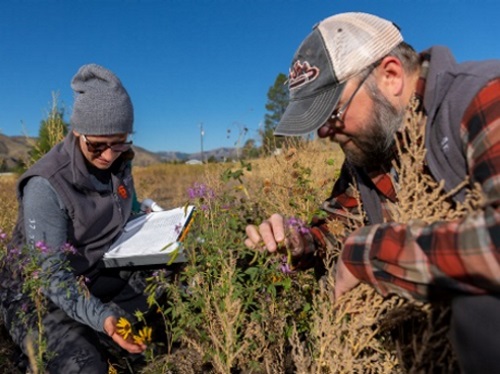Ecologists at Idaho State University are working with the Idaho Transportation Department to turn state roadsides into veritable “Swiss army knives” of vegetation so they are both more fire-resistant and more welcoming to pollinating insects.
[Above photo by Idaho State University]
Joshua Grinath, assistant professor of community and global change ecology at the school, and his students recently wrapped up the first growing season at three experimental sites along I-15 in Eastern Idaho.
They are working with three different types of ecosystems at those sites, figuring out how to make the land more hospitable to native plants and less so for invasive weeds. That research also includes increasing the habitat’s fire resistance, while becoming a more attractive habitat for pollinators like bees and butterflies.
[Editor’s note: In a July 2021 episode of the Environmental Technical Assistance Program or ETAP Podcast, Matthew Quirey – a landscape design and research fellow with The Ray – explained how roadside landscapes, more often termed the “right-of-way,” are now being viewed as “habitat assets” instead of maintenance burdens among state departments of transportation.]
Grinath’s research team is testing how different combinations of mowing, herbicide treatments, and seed applications can improve native plant survival in those roadside locales.
This research received its primary funding via a grant from the Idaho Transportation Department, with additional funds supplied by ISU’s College of Science and Engineering, as well as the school’s Office for Research.
In September, the team received additional funding to test how adding certain types of bacteria, fungi, and micronutrients to the soil may improve restoration.
“Roadside management is most commonly focused on a single issue, such as erosion control, but other challenges may be able to be addressed simultaneously,” Grinath explained in a blog post. “Considering these issues simultaneously will help Idaho Transportation Department save taxpayers money and address urgent land management concerns.”

